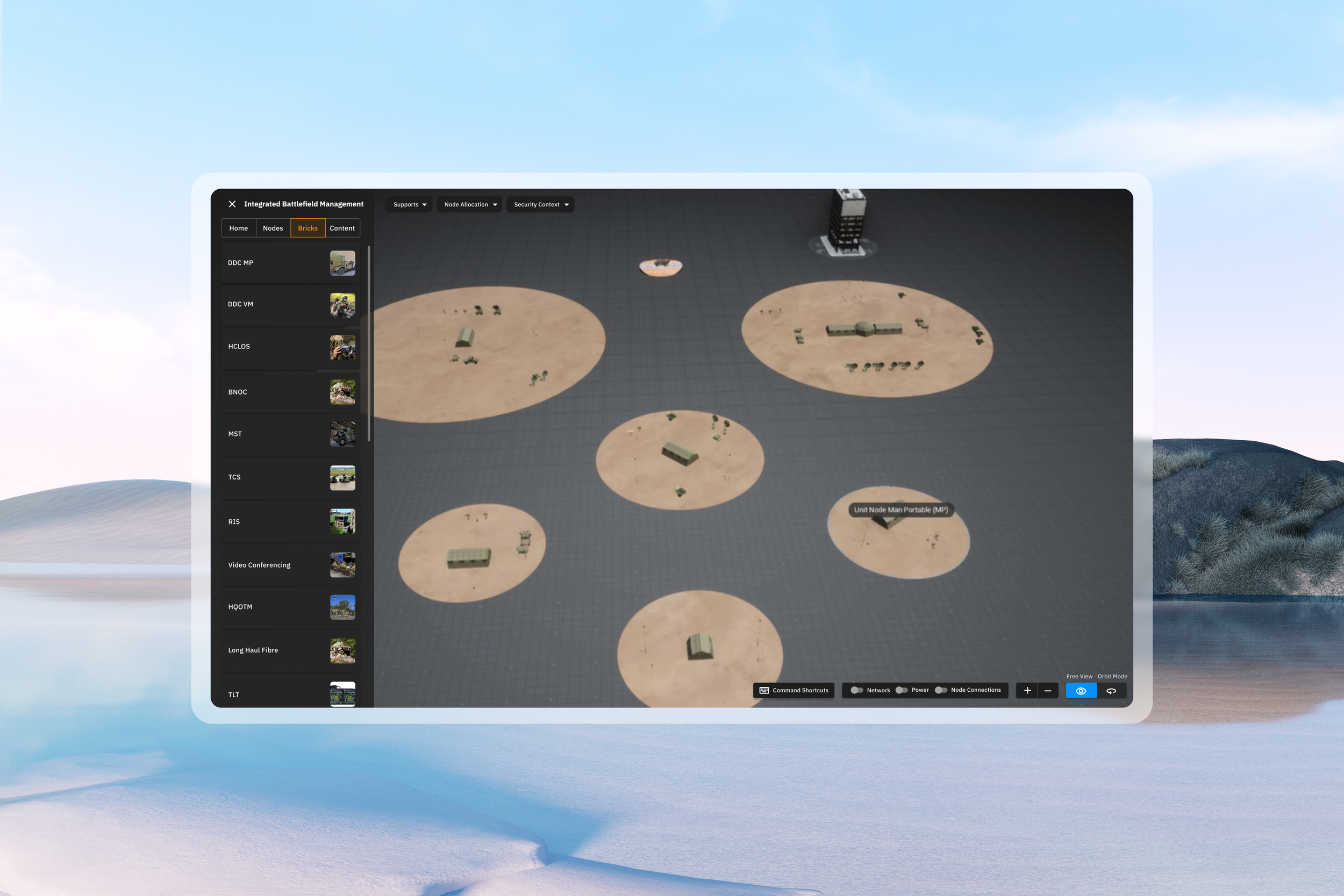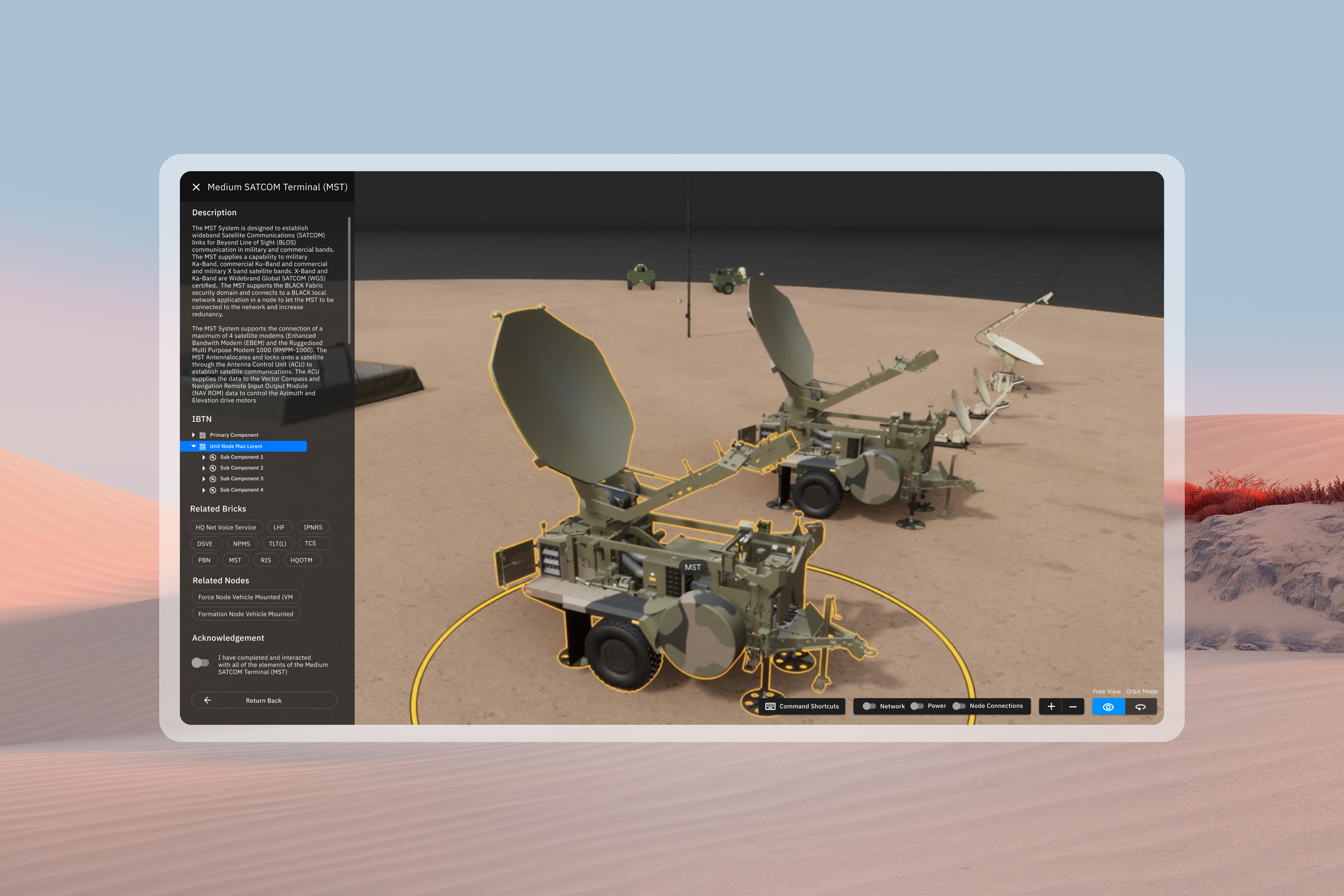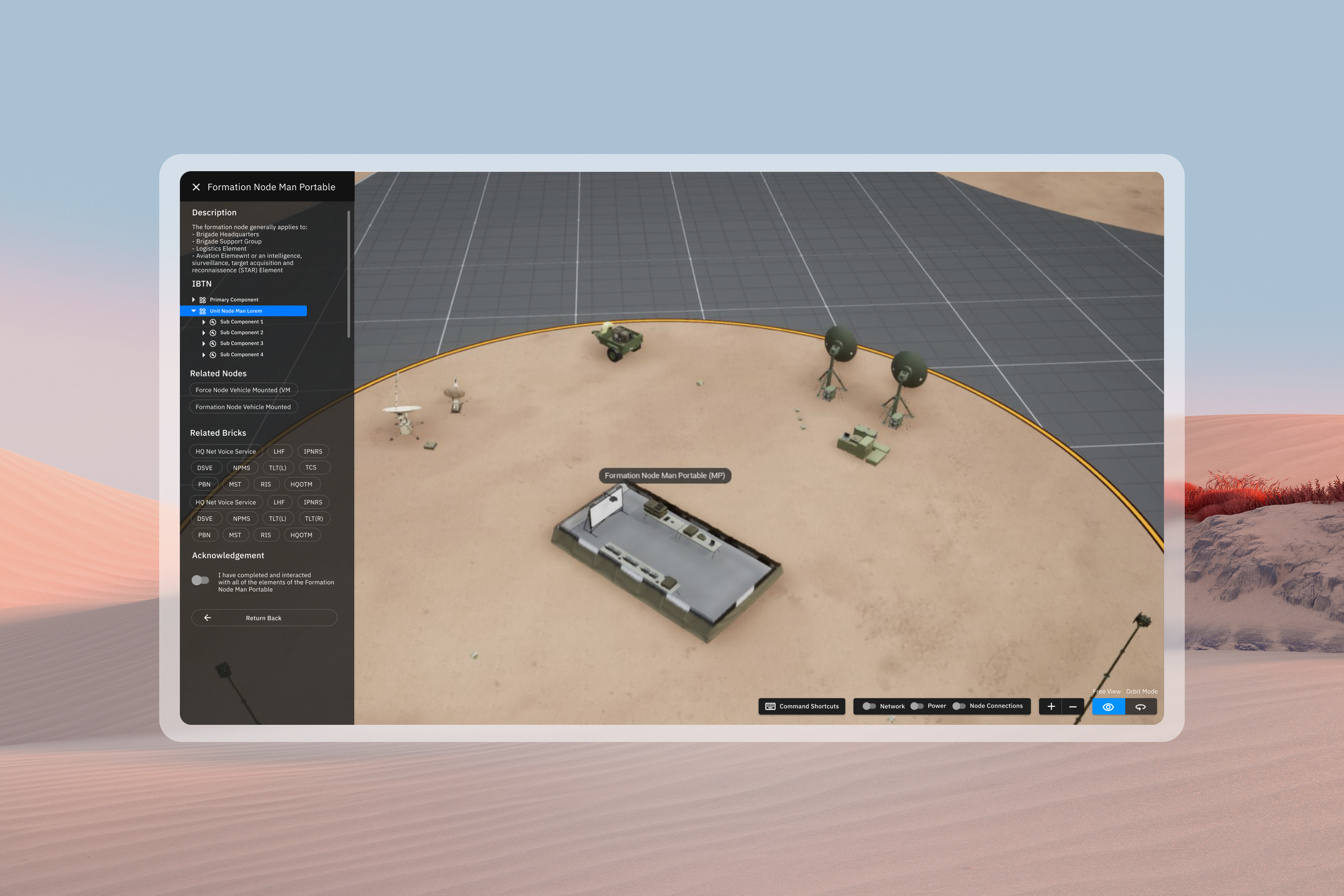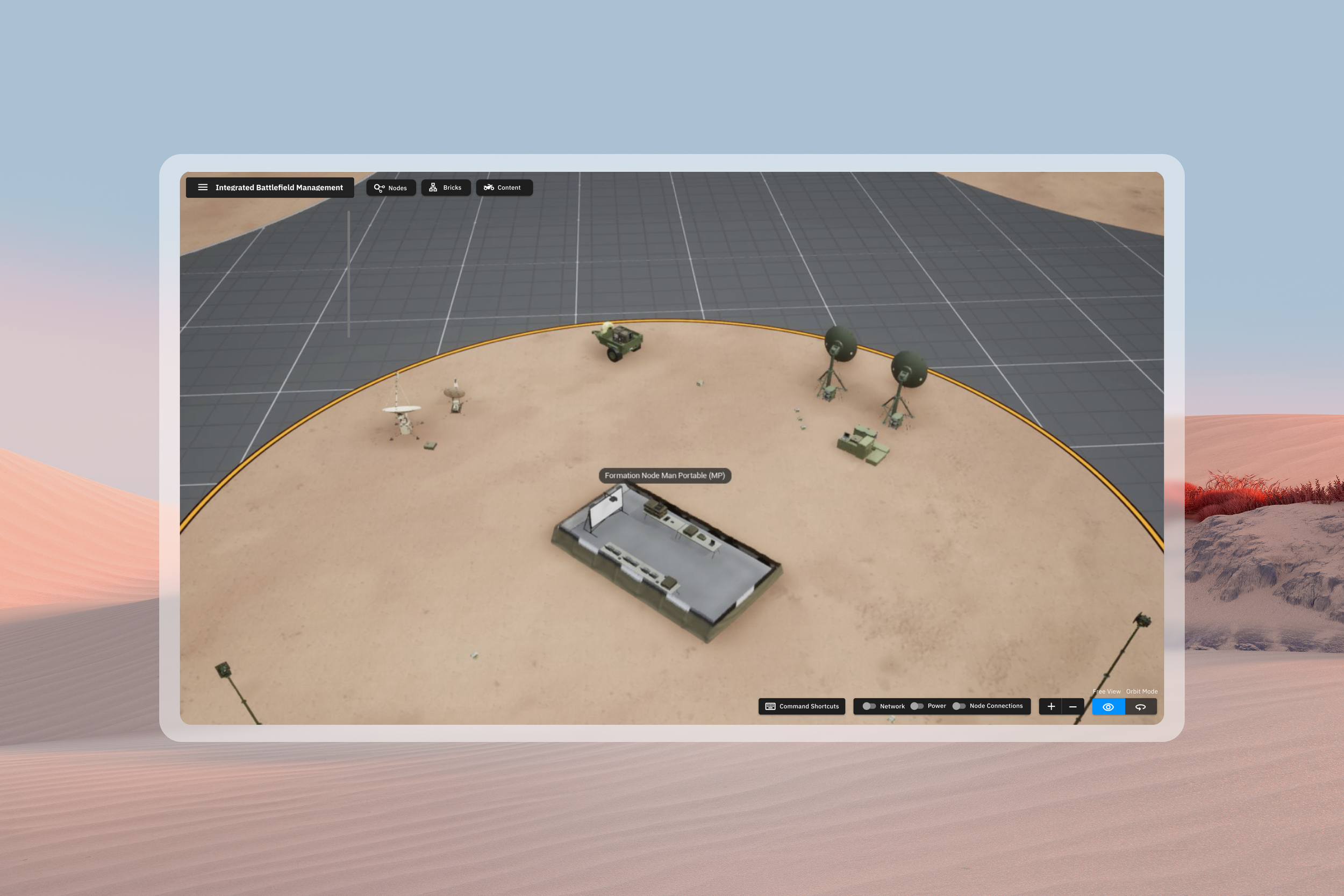3D Immersive Training - Integrated Battlefield Management
Context
Project Currawong was a Commonwealth initiative aimed at revamping battlefield communications with a cutting-edge system that’s secure, resilient, and scalable. My organization of Boeing Research and technnology was assigned this task through their work with the Defence force.
The commonwealth was looking at ways to enhance decades old training based upon PDF based textbooks. This led to dense text based learning that led up to a singular all day event where soldiers would need to wait their turn to spend 15 minutes with hardware in hand to complete their training. There was an interest in seeing what possibilities existed with digital training to help augment the current methods to see if there might exist a solution in the middle, while still not replacing the in person element of training. Initial development efforts had been done to create a core MVP of integrating those training materials in a digital 3D enviornment. Customer feedback was positive and learning outcomes shifted to a positive direction as did first time passing of assessments. There was however an interest in creating an experience that felt more free world and not so locked in a viewport style experience to in some sense match the spatial sensibilities of viewing a 3D object more organically than through a restrictive viewport. below are a few screens from the initial MVP experience
My Role and Contributions
For three intense but incredibly rewarding months, I was at the helm of the visual direction and UI design for the software application within the Currawong system. It was a project that brought a blend of high-tech wizardry and user-centered design, all coming together to make military communications smoother and more intuitive. During this time, I collaborated with an incredible team of engineers and developers, using tools like Unreal Engine and Figma. We had the opportunity to connect with the commonwealth instructors first hand and to also run usability sessions to gather feedback on the current MVP experience.
Core Features
For this experience to be successful it needed to ensure it carried over the core system requirements from the MVP experience. This meant showcasing the various pre-established visuals and frameworks to describe the interrelationship between the equipment. At a high level this involved distributing the curriculum into sections that covered nodes, which are groupings of similar types of hardware, bricks which are individual components with smaller pieces, eg a satellite dish and it’s associated wiring and then purely a content library to browse and find all the individual elements.
Visual Direction & UI Design
Think of it as creating the ultimate style guide. My mission was to ensure that everything looked sleek and consistent, from the tiniest icon to the overall layout. I crafted interfaces that were not only visually appealing but also super user-friendly, designed to meet the unique demands of military operations.
User-Centered Design
This part was all about connecting with the ADF personnel. I spent a lot of time chatting with them to understand their needs and frustrations, what was working in their curriculum and also their thoughts on the proposed MVP experience. I also had sessions with customers to nail down their expectations and ensure the application hit the mark.
Collaboration
Teaming up with the engineering and development folks was key to making sure my designs weren’t just pretty pictures but actually worked seamlessly in the real world. Every couple of weeks, we’d have these fun shareouts. It was like show-and-tell for grown-ups, where I’d showcase our progress and soak up feedback.
Development Platform
We used Unreal Engine for the final build, ensuring the app was not just good-looking but also a high performer. I was in the co-located with the developers, making sure everything was on point.
The Journey from Concept to Reality
It all started with deep dives into the users’ world. I listened to their stories, understood their workflows, and pinpointed their communication hurdles. Gathering feedback from customers and stakeholders helped shape the core requirements of our design.
Armed with insights, I sketched out wireframes and prototypes. This phase was all about exploring possibilities. Usability testing sessions were a blast, helping us validate which ideas clicked and which needed tweaking. An important focus was getting the UI out of the way of learning and trying to maximize their virtual window into these spaces.
I moved on to crafting high-fidelity mockups and interactive prototypes. Think of it as turning rough sketches into a polished reality. Feedback was our best friend. We iterated relentlessly, refining the designs until they felt just right.
The grand finale involved bringing the design to life. I worked closely with developers, ensuring every detail was spot on. Rigorous testing was key to making sure our app was not just functional but also delightful to use.
Updated Experience
The end result was a robust, user-friendly communication tool for the ADF that seriously boosted their operational efficiency. The application stood out for its clarity, with navigation being a breeze thanks to a clear visual hierarchy. It was designed to be super usable, even in challenging field conditions, and scalability was baked in, making it ready for whatever comes next. The key focus was to remove the limitations of the previous UI obstructions to let users purely focus on the material at hand and to begin mapping the spatial sensibilities of what it will be like to setup this hardware in person.
Core Menu’s





In-Depth Exploration of Nodes and Hardware



The Impact
Better communication was achieved with streamlined interfaces that made user interactions effortless and intuitive. The feedback was overwhelmingly positive, with users and stakeholders loving the intuitive design and smooth experience. This project fostered amazing collaboration between the design, development, and user teams, leading to a successful rollout. Training courses had a 20% faster turnaround of students achieving mastery at their first go at assembly of the various configurations. This also led to a decrease in training mistakes and more successful mission outcome for the commonwealth’s forces.



